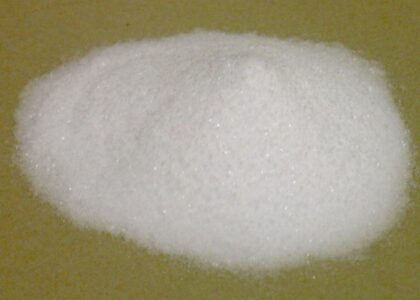The staple fiber market is set for steady growth, with a CAGR of approximately 3.6% anticipated through 2034, as both synthetic and natural fibers gain traction across sectors including automotive and home furnishings. This trend highlights the versatility and essential role of staple fibers in modern manufacturing.
Staple fibers are short-length fibers commonly used in the textile industry for spinning yarn, producing nonwoven fabrics, and various other industrial applications. These fibers can be natural, like cotton and wool, or synthetic, such as polyester and nylon. Staple fibers are a key component in various sectors including apparel, automotive, home textiles, and healthcare. Their ability to provide comfort, durability, and adaptability has made them a preferred material for a wide range of products, driving demand globally.
As industries move toward sustainable production, biodegradable and recyclable staple fibers are also gaining traction, pushing market players to innovate and explore environmentally friendly fiber solutions. The surge in demand for sustainable fibers, coupled with advancements in production technologies, is expected to shape the future of the staple fiber market.
Staple Fiber Market Size and Growth Projections
The global staple fiber market is experiencing consistent growth and is projected to expand steadily over the next decade. In 2024, the market is estimated to reach USD 4,133.6 million. Looking forward, it is expected to grow at a compound annual growth rate (CAGR) of 3.6% from 2024 to 2034, reaching a market value of USD 5,887.4 million by 2034.
This growth is largely driven by rising consumer demand for apparel, increasing industrial applications of staple fibers, and the rising adoption of eco-friendly alternatives. With consumer preferences shifting toward comfort and sustainability, the textile industry is relying heavily on staple fibers, particularly those that are eco-friendly or biodegradable.
The consistent expansion of the market indicates increasing applications of staple fibers across a diverse range of industries, including healthcare, construction, and automotive, where staple fibers are used in insulation, filters, and reinforcement products.
Prominent Drivers of the Staple Fiber Market
- Rising Demand for Sustainable Textiles: With the growing awareness of environmental sustainability, there is a strong demand for eco-friendly, biodegradable fibers in various industries. Textile manufacturers are increasingly focusing on natural staple fibers like cotton and wool, as well as recycled fibers, to meet the rising consumer demand for sustainable products. This trend is expected to significantly drive the growth of the staple fiber market in the coming years.
- Expanding Apparel and Home Textiles Market: The staple fiber market is heavily influenced by the booming apparel and home textiles industries. As consumers demand more comfortable, durable, and eco-friendly fabrics for clothing and home furnishings, the need for staple fibers continues to rise. Additionally, staple fibers offer versatility and affordability, making them a popular choice for both budget and premium textile products.
- Growing Applications in Automotive and Construction Industries: Beyond textiles, staple fibers are finding increasing applications in industrial sectors such as automotive and construction. In the automotive industry, they are used for seat covers, insulation, and reinforcement materials, while in construction, they are utilized in concrete reinforcement, insulation, and filtration. The growth of these industries, particularly in emerging markets, is expected to fuel the demand for staple fibers.
- Technological Advancements in Fiber Production: Ongoing advancements in fiber production technologies, including innovations in synthetic and bio-based fiber manufacturing, are positively impacting the market. The development of fibers with enhanced properties, such as durability, strength, and flexibility, is helping manufacturers cater to specific industrial needs. These advancements are likely to enhance market competitiveness and drive growth.
Leading Staple Fiber Brands
- TORAY INDUSTRIES INC.
- ADITYA BIRLA GROUP
- RELIANCE INDUSTRIES LIMITED
- TONGKUN GROUP
- SWAN FIBER COMPANY
- Alpek
- CHINA PETROLEUM AND CHEMICAL CORPORATION
- TEIJIN FRONTEIR Co. Ltd
- Hubei Botao Synthetic Fiber Co., ltd
Challenges Faced by the Staple Fiber Market
Despite its promising growth, the staple fiber market faces several challenges that could limit its potential. Key challenges include:
- Volatile Raw Material Prices: The prices of raw materials used in staple fiber production, particularly synthetic fibers like polyester and nylon, are highly volatile due to fluctuations in crude oil prices. This unpredictability can impact production costs, creating challenges for manufacturers in maintaining price stability.
- Environmental Concerns: While there is a growing trend toward sustainable and biodegradable fibers, the production of synthetic staple fibers, such as polyester, has raised environmental concerns due to its dependence on non-renewable resources and contribution to pollution. The industry faces increasing pressure from regulators and consumers to reduce its environmental impact, which may require significant investment in sustainable production technologies.
- Competition from Alternative Materials: The staple fiber market faces competition from alternative materials such as filament fibers, which offer longer fiber lengths and higher tensile strength. In certain applications, filament fibers may be preferred over staple fibers, posing a challenge for market growth. Additionally, the rising popularity of advanced fabrics and smart textiles may shift demand away from traditional staple fiber products.
- Supply Chain Disruptions: Global supply chain disruptions, particularly due to geopolitical tensions, transportation issues, and pandemics, have impacted the availability and cost of raw materials for staple fiber production. These disruptions can affect production timelines and market supply, leading to potential delays and increased costs for manufacturers.
Key Segments of Market Report
By Type:
The industry is segmented into cotton, cellulosic, polyester, and others.
By Application:
The category is categorized into apparel, automotive, construction, home furnishing, filtration, personal care and hygiene, and others.
By Region:
Industry analysis has been carried out in key countries of North America, Latin America, Western Europe, Eastern Europe, South Asia, East Asia, and the Middle East and Africa.
About Future Market Insights (FMI)
Future Market Insights, Inc. (ESOMAR certified, recipient of the Stevie Award, and a member of the Greater New York Chamber of Commerce) offers profound insights into the driving factors that are boosting demand in the market. FMI stands as the leading global provider of market intelligence, advisory services, consulting, and events for the Packaging, Food and Beverage, Consumer Technology, Healthcare, Industrial, and Chemicals markets. With a vast team of over 400 analysts worldwide, FMI provides global, regional, and local expertise on diverse domains and industry trends across more than 110 countries.
Join us as we commemorate 10 years of delivering trusted market insights. Reflecting on a decade of achievements, we continue to lead with integrity, innovation, and expertise.
Contact Us:
Future Market Insights Inc.
Christiana Corporate, 200 Continental Drive,
Suite 401, Newark, Delaware – 19713, USA
T: +1-347-918-3531
For Sales Enquiries: sales@futuremarketinsights.com
Website: https://www.futuremarketinsights.com
LinkedIn| Twitter| Blogs | YouTube




